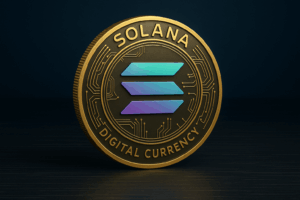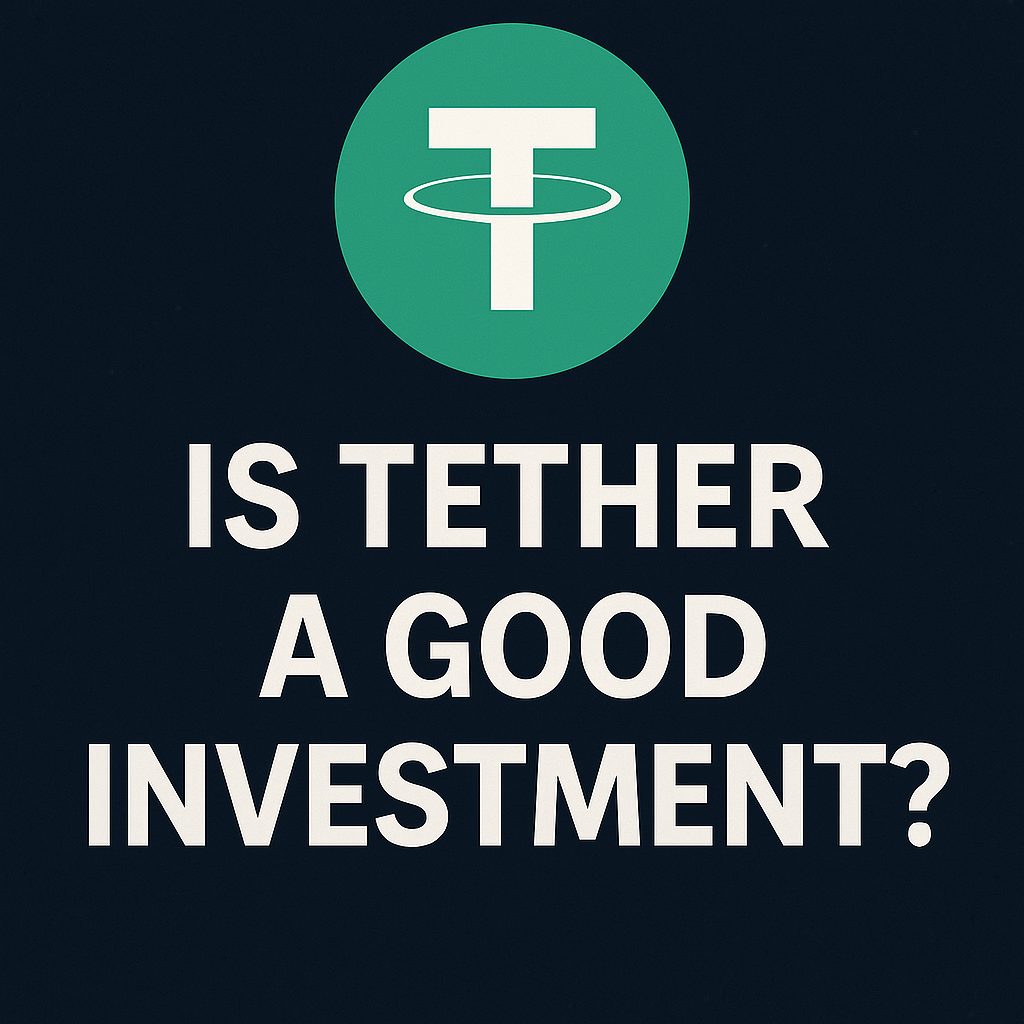Exploring the Impact of Quant (QNT) on Central Bank Digital Currency Integration
Introduction: The Rise of Digital Central Banking and the Evolution of Modern Finance
The world of finance is experiencing a complicated time of transformation and change. According to an estimate of 2023 created by BIS The Bank for International Settlements (BIS), over thirty countries have started to explore or develop Central Bank Digital Currencies (CBDCs). It accounts for ninety percent of the world’s GDP. The advent of CBDCs marks an important turn in the evolution of money-their respective central banks are attempting to reinvigorate their economic systems and improve the efficiency of their payment processes while maintaining economic sovereignty in a digitally advancing world.
CBDCs Explained: Understanding Central Bank Digital Currencies
Central Bank Digital Currencies (CBDCs) are digital forms of a country’s fiat currency issued and administered by the central bank. Unlike a cryptocurrency that includes Bitcoin and Ethereum running on decentralized platforms, CBDCs exist centrally and are backed fully by the government issuing them. They aim to marry the benefits of digital currencies-fast transactions, low cost, economic integration-and the stability and trust associated with common fiat currency.
CBDCs can solve many problems in today’s financial system. They can diminish dependence on cash issued by the printing press that is very expensive to produce and distribute. On the other hand, they offer a solution to the payment problems beyond borders such as slow, very expensive, and non-transparent operating systems. Furthermore, CBDCs can improve financial inclusion for individuals by providing access to digital payment means for those who are unbanked or underbanked.
Connecting Traditional Banking and Blockchain: The Future of Finance
As central banks are examining the potential of CBDCs, a key challenge they face is interoperability–the ability for various blockchain networks and legacy financial environments to communicate and react in concert. This is where the Quant Network comes in.
Founded in 2015, and supported by Gilbert Verdian a career cybersecurity professional, Quant Network has grown to be a natural leader in the blockchain ecosystem. Quant Network’s vision is to solve this “network of blockchains” problem, by enabling interoperability between various blockchain platforms as well as legacy services. At the heart of Quant’s vision is Overledger the gateway technology enabling continuous connectivity into blockchains.
Quant’s Contribution to Central Bank Digital Currency (CBDC) Development
Arguing in terms of the blog, Quant’s Overledger is considered the only platform that can make a central contribution to the successful launching of CBDCs. Until now, there was no mechanism to ease the gap between traditional financial services and the digital future except through the seamless integrations of exclusive blockchain networks and established financial infrastructures by Quant. With central banks of nations all over the world nearing the actual implementation of their own retail CBDCs, Quant’s sole technology stands positioned to become a centrepiece in the world of finance.
Exploring Quant’s Overledger: The Ultimate Blockchain Interoperability Solution
Quant Network was created from the need for an environment that would allow different blockchain networks to be able to communicate and collaborate in tandem with traditional financial systems. It was conceived pragmatically: as blockchain exploded into multiple applications, with numerous remote networks working within closed boundaries of isolated pockets, fragmentation emerged as a major impediment to the mass adoption of blockchain technology in the very industry that it was attempting to formalize i.e. the financial industry.
To that end, Quant developed Overledger as an application to achieve interoperability across unique blockchains and traditional platforms. Overledger operates as an API gateway allowing developers to create applications that are usable across multiple blockchains and are not tied down to one single platform.
Blockchain Interoperability Architecture: Building Seamless Cross-Chain Connections
The very architecture of Overledger is an ingenious one and made so simple to grasp. At its core is the notion of Overledger being a single layer over existing blockchain networks so that they may be accessed through a single interface and worked upon. This is done via a series of APIs (Application Programming Interfaces) and SDKs (Software Development Kits) that permit developers to connect their software to Overledger, and thus to any blockchains recognized by Overledger.
Major components are essential in the structure of Overledger:
- Overledger Network: It is the nucleus that connects various blockchains along with the legacy platforms.
- The Overledger Gateway: An Integral component working as a bridge between the Overledger Network and person blockchain networks for smooth communication and transfer of information.
- Overledger APIs: These APIs allow the developers to compose packages that run on top of multiple blockchains. They process a whole gamut of transactions, smart contracts, and querying.
The flowchart below will help one grasp how the Overledger works:
Here, Overledger sits in the middle tier connecting Blockchain A, Blockchain B, and the Legacy System. The developers can then use Overledger APIs to build applications communicating to all the three networks without having to bother about the core complexities of the networks themselves.
The Importance of Interoperability in Central Bank Digital Currencies (CBDCs)
Interoperability is vital to the success of CBDCs. To realize their full potential upon success, CBDCs need to operate interchangeably with other forms of digital currencies and the established financial infrastructure. This is especially critical for multiple cross-border bill payments. There must be an exchange of costs between two CBDCs as unique and traditional currency.
Quant’s Overledger technology provides a solution to the need for open interoperability on the blockchain. By permitting information flow to revel across blockchain networks and legacy platforms, CBDCs can operate across existing global financial components without disruption or need to alter them.
Quant Network’s Key Role in CBDC Development: Project Rosalind and Its Broader Impact
Quant is involved in a very active manner in the implementation of several important central bank Digital Currency projects while they also participate in Project Rosalind-a joint initiative of the Bank of England and the Bank for International Settlements. Project Rosalind assesses the efficacy of CBDCs for consumer payments with respect to maximizing consumer satisfaction and ensuring their compatibility with existing pricing methods.
Quant’s work with Project Rosalind has helped to highlight the real-world applicability of the Overledger technology. By providing an unbroken interface linking several blockchains and legacy technology, Quant has furthered the aim of identifying CBDC utilities newly conceived as smart, programmable money and contracts.
Apart from Project Rosalind, Quant has further worked with other large financial institutions and banks on CBDC-related projects. Perhaps stated of interest is the company’s cooperation with the European Central Bank (ECB) on an enhancement of some form of digital currency, together with their concurrent association with the Monetary Authority of Singapore (MAS) on Project Ubin, a multi-phase investigation into using blockchain technology for the clearing and settlement of securities and bills.
Technology Behind CBDCs: Core Contributions to Digital Currency Infrastructure
Going into a little more detail, the next generation Quant addresses three main aspects in the evolution of CBDC: security, scalability, and cross-border payments.
- Security: CBDCs need to be able to protect themselves from cyber-attacks and fraud. With Quant’s Overledger Era, there is a best in breed security environment in place through the execution of a transaction. They can provide encryption, privacy, and multi-signature authentication to ensure transaction integrity and confidentiality.
- Scalability: Scalability is important too because CBDCs will likely transact in large volumes. The Overledger architecture offers very high throughput service to ensure CBDCs can scale as adoption grows.
- Cross-Border Payments: A core use case for CBDCs is cross-border payment and of course Overledger helps to increase, to some degree, interoperability between both CBDCs and fiat currencies to allow faster, cheaper, and more transparent payments across different jurisdictions.
Real-World Examples of CBDC Development: The Digital Pound and More
The most well-known CBDC initiative by Quant is likely The Digital Pound, proposed to be a digital currency through the Bank of England, with involvement by Quant being a key aspect in the formation of the Digital Pound with an emphasis on providing the technology to support digital currencies in accordance with the existing monetary architecture.
The Digital Pound proposal appears to be gaining traction, with various pilot programs already underway. So far, the pilots have reported on the benefits of digital currency, including increased payment efficiency, decreased transaction fees, and increased accessibility for monetary transactions. The contribution Quant has made to this effort is recognized throughout the industry. Many commentators have also praised Quant’s creative solutions to blockchain interoperability.
In addition to The Digital Pound, Quant has been engaged with a range of other CBDC initiatives in the industry. For example, Quant collaborated with the Reserve Bank of Australia (RBA) on Project Atom, which is a research initiative examining the usability of CBDCs for wholesale payments. Project Atom demonstrated positive outcomes through allowing seamless connectivity between blockchain platforms and legacy systems leveraging Quant’s invention.
QNT Crypto and CBDCs: Enabling Seamless Interoperability in Digital Currency Systems
The prime currency of the Quant Network is called QNT. It is, in the literal sense, the gasoline that powers the Overledger platform and sets forth a fee for joining or employing any of the available capabilities and applications. The QNT token is responsible for many important functions in the market:
- Access to Overledger: The Companies and developers must keep QNT tokens to gain access to the Overledger platform and build applications using its interoperability capabilities.
- Transaction fees: Quant Tokens are used to pay for the transactions implemented on the Overledger network, ensuring that the network retains security and efficacy.
- Governance: Quant token holders can participate in the governance of the Quant Network by voting on key decisions and proposals that will shape the future of the network.
The potential use Plans for using QNT tokens are closely tied to the CBDC integration need. As more banks and financial institutions are beginning to issue CBDCs, the need for seamless, interoperable operation between distinct blockchain networks and even between legacy systems is likely to grow. The end of this will raise the demand for the Quant token that must be used to render the full strength of the interoperability solutions of Overledger.
Digital Currency Market Insights: Economic Impact and Financial Forecasts
The QNT token has, in recent years, generally moved into very good market price levels, mainly due to an increase in underpinning demand for CBDCs and blockchain interoperability. By 2023, this QNT token is projected to hold an estimated market capitalization of $1 billion. This ranks it among the top 100 in cryptocurrency by market capitalization.
Over a span of many longtime years, the price of QNT token has been highly correlated with the development and usage of CBDCs. Whereas a larger number of central banks from various regions are beginning to release their very own digital currency, our concept of an ever-increasing demand for interoperable services such as Overledger is expected to come true. This in turn will drive the price of QNT token upward, establishing it as one of the principal tokens in the world CBDC community.
CBDC Adoption Challenges: Addressing Regulatory Hurdles and Ensuring Secure Compliance
The regulatory landscape is much too complex yet very much crucial at the entry of such novel financial instruments as CBDCs. Against all odds, central banks have somehow had to confront innumerable regulations and compliance standards, including AML, KYC guidelines, data privacy regulations, cybersecurity regulations, and so on.
For more on AML and KYC standards, the resources availed by the Financial Action Task Force (FATF) shall be one of the best tools.
Quant is the perfect solution for these regulatory challenges. Quant is the firm with a top-notch security and compliance mindset supported by a team of cybersecurity and regulatory specialists. Quant’s Overledger is with very advanced security capabilities, with encryption and multi-signature authentication options. This protects CBDCs from security threats by cybercriminals as well as fraudulent activities.
Overcoming Technical Challenges in CBDCs: Scalability, Security, and Blockchain Interoperability
In addition to all regulatory hurdles, Central Bank Digital Currencies (CBDCs) are facing some of the greatest technical issues of scalability, security, and interoperability. For the successful management of the difficulties, it is of utmost importance to ensure that CBDCs are capable of safely handling a very high number of transactions, establishing their identity and veracity in the virtual currency world.
The next-generation Overledger from Quant greatly tackles these problems:
- Scalability: The original design dimension of Overledger was to carry high throughput applications, meaning that CBDCs can scale appropriately with an increasing number of CBDCs they utilize.
- Security: The advanced security features come with this platform, which includes multi-signature encryption and encryption for ensuring integrity and privacy.
- Interoperability: Overledger enables the seamless interchange of information between certain blockchain networks and pre-existing structures, allowing CBDCs to integrate into the current financial system of the world without affecting these pre-existing infrastructures.
By addressing these hard technological issues, Overledger further assures that CBDCs have got to be functioning correctly, securely, and efficiently within the rapidly evolving global virtual derivate system.
The Future of CBDCs: Quant Network’s Strategic Role in Privacy and Smart Contract Innovation
CBDCs technology will develop in many ways with all the technological advancements—including privacy and smart contracts. Privacy is going to be an important consideration for CBDCs. Central banks will require balance to ensure they will incorporate more transparency, yet they will still need to respect user privacy. Smart contracts can allow for the automation of complex economic activities and provide additional efficiencies for CBDCs.
Quant’s technology is well positioned with these capabilities. Overledger can leverage privacy-preserving technology, which can be used with zero-knowledge proofs (zk-SNARKs) that can give evidence that a transaction is compliant, but without any details related to that transaction disclosed. Additionally, Overledger can facilitate smart contracts, so developers can provide more create solutions to automate financial scenarios.
Quant’s Strategic Role in Driving Global CBDC Adoption
If the international acceptance of CBDCs is growing, many adoption possibilities would be conceivable. One possibility would be a multi-CBDC kind of system wherein principal central banks face the issue of their digital currencies interfacing with other CBDCs. Another possibility would be a global CBDC-initiated for cross-border payments by way of a network of essential banks.
In these cases, it is the very birth of Quant which would add strategic value. Overledger’s interoperability is the backbone of any multi-CBDC arrangement in ensuring seamless data exchange between existing CBDCs and traditional currencies. Overledger forms the tech infrastructure behind the world’s CBDC bills for smoother, cost-effective move-border transaction processing.
Expert Insights and Forecasts on CBDCs and Digital Currency Trends
A lot of experts hold the view that CBDCs will very much become focal in financial services in a short while. The World Economic Forum research states that CBDCs can bring a revolution into the financial sector, help pay faster and more cost-effectively and reduce the scope of payment. It also underlines the need for interoperability and states that CBDCs should be able to seamlessly interact with all other digital currencies and the current economic infrastructure.
Quant technology adequately fits into these stellar forecasts. Overledger’s interoperability ensures that CBDCs become a member of the world’s financial environment, securing their full potential. Quant technology is more likely to become the backbone of the world’s financial system as more banks worldwide embrace CBDCs.
Bridging Traditional Finance and Blockchain: Quant Network’s Key Contributions
Quant has been one of the real creators of CBDCs. It provided the fundamental infrastructure for interoperability among different blockchain networks and traditional structures. Through the Overledger of Quant, banks have been assisted in recognizing the most advanced use scenarios for CBDCs that include programmable cash and smart contracts.
Unlocking the Transformative Power of Central Bank Digital Currencies (CBDCs)
CBDCs are transforming the global economic space into faster, cheaper, less expensive, and more comprehensive billings. But, to harness the maximum potential of CBDCs, they must be capable of seamlessly interfacing with other currencies that are virtual and existing financial infrastructures. Quant’s Overledger technology provides the interoperability tools for connecting traditional financial institutions and the digital future.
The emergence of CBDCs carries with it a vast array of new trends and developments that individuals and companies vying to be informed of. Just as Quant’s generation inspired our readers, they must also share ideas and thoughts regarding the subject. Together, we can help shape financial futures and create an inclusive and efficient worldwide monetary system.



















